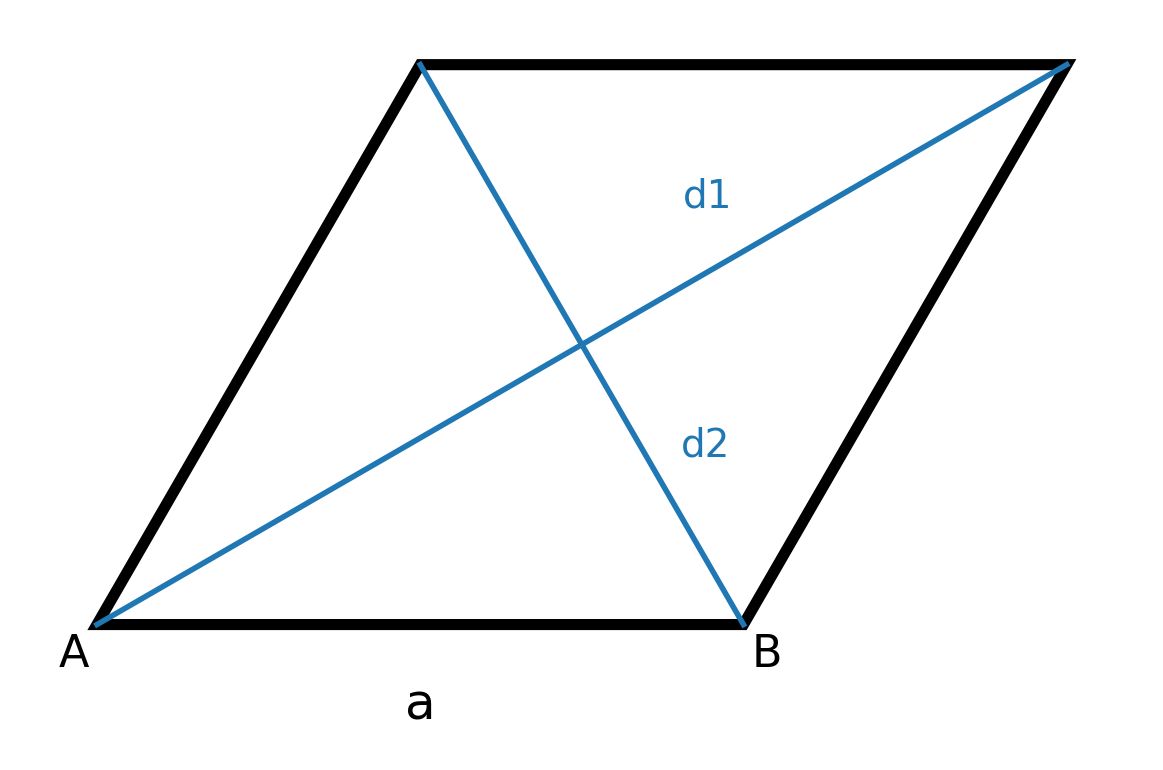Rhombus
A rhombus is a skewed square and is similar to a parallelogram, which is a skewed rectangle.
One can also say that all squares are rhombuses, but not all rhombuses are squares, because the angles in a rhombus do not have to be 90 degrees.
The rhombus is often easy to calculate in practice, because all sides are equal in length just like in a square.

Properties that characterize a rhombus
- All four sides are equal in length.
- Opposite sides are parallel.
- Opposite angles are equal, and adjacent angles add up to 180 degrees.
- The intersection point of the diagonals is also their midpoint.
- The diagonals are perpendicular to each other.
- Each diagonal bisects the adjacent angles, so the figure has two axes of symmetry along the diagonals.
- The rhombus can be divided into four congruent right triangles.
The fact that the diagonals bisect each other and are perpendicular means that the rhombus can be divided into right triangles.
This makes it possible to use the Pythagorean theorem and elementary trigonometry in calculations.